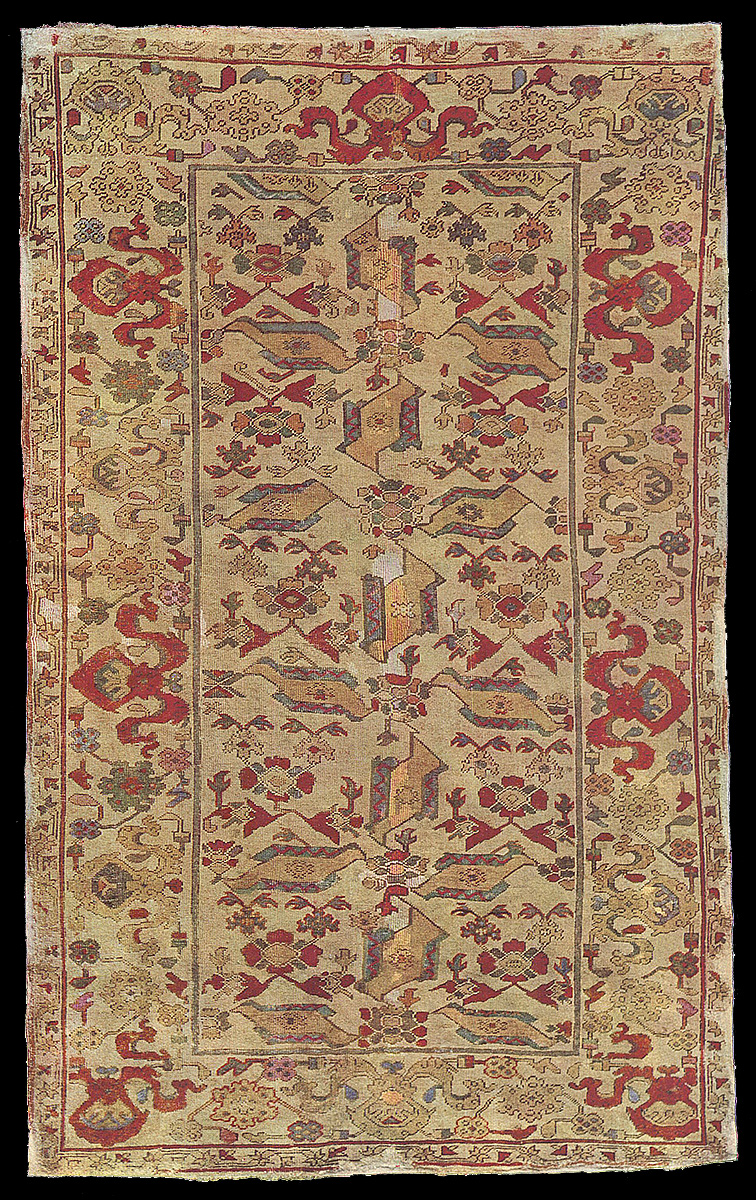|
Bird Ushak carpet. Victoria and Albert Museum, No. 134
Acquired in 1884. 6 feet x 3 feet 9 inches (1.83m x 1.14m).
Warp.—Two-ply brownish-white wool; 17 to one inch; on one level.
Weft.—Brownish-white wool; two shoots after each row of knots.
Knots.—Wool; Ghiordes type; 10 to one inch; 90 to the square inch.
Colours.—Eight. White, now deep in tone (field and both borders); medium
red; ochre; green; yellow; blue; light red; black.
Few early rugs
have a white ground, and those that are known generally differ in design
as well as in colour from the more common Asia Minor pieces. As far,
however, as the method of knotting is concerned and the quality of each
colour, apart from the proportion in which it is used, the correspondence
of the white rugs with the others is perfect. In the white rugs, instead
of a number of panels occupying the field, there is as a rule a small
repeated diaper, and if a central medallion is intro¬duced, it is not made
large or conspicuous. In the present rug the twisted figures that in
conjunction with rosettes form the diaper; they may be an angular
rendering of the well- known S-form, or possibly they are merely
conventionalised leaves.
The pattern in the main border-stripe
consists of cloud-bands, rosettes and floral stems. It is a common one at
this period, and may be seen in two other carpets at the Museum (Nos. 132
and 138) associated with very different types of field-design.

|

